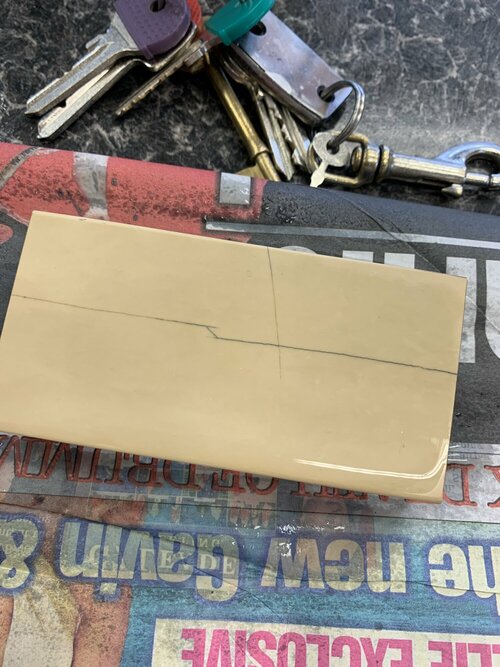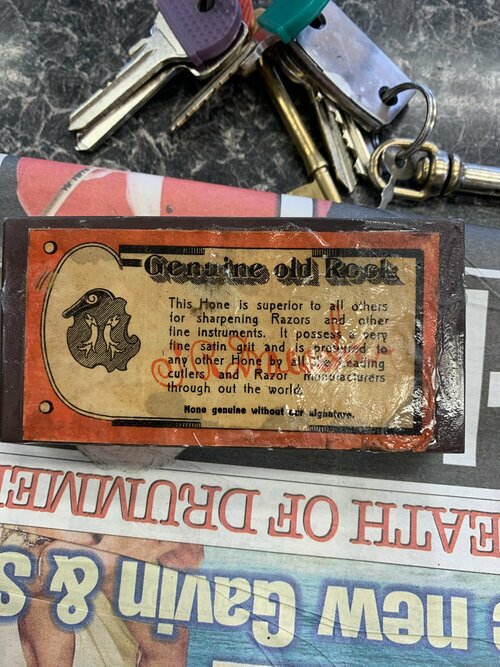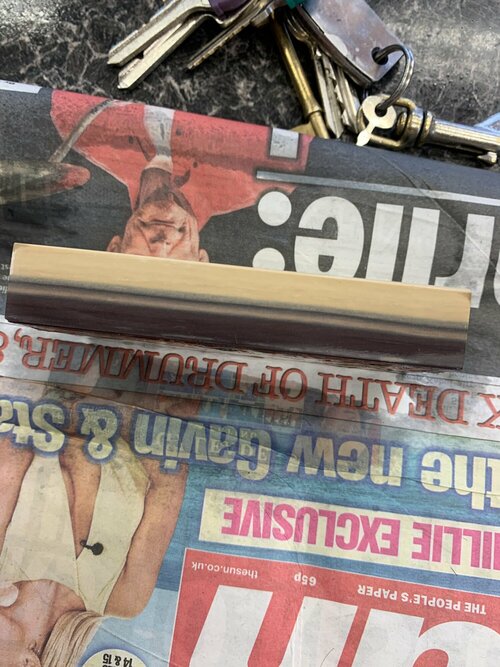Gents,
The standard looking natural combo arrived, and it appears to be a neat stone. It is not overly hard, it does cut, and it has an iridescence to both sides that I find attractive.
I did a few slurries, then finished under water. One thing that surprised me is that the slurry was creamy, and I detected no graininess.
The resultant HHT was nice…at the very back of the heel the hair folded back on itself, but everywhere else it just fell off the edge onto the other side. So I am going to shave test it after the first wave of kids go to bed!
Does anyone know what the back layer is…or vein…or anything based off of the pictures? I don’t have a clue about these…first one…first attempt at honing on one…etc!
Thanks!
Vr
Matt







The standard looking natural combo arrived, and it appears to be a neat stone. It is not overly hard, it does cut, and it has an iridescence to both sides that I find attractive.
I did a few slurries, then finished under water. One thing that surprised me is that the slurry was creamy, and I detected no graininess.
The resultant HHT was nice…at the very back of the heel the hair folded back on itself, but everywhere else it just fell off the edge onto the other side. So I am going to shave test it after the first wave of kids go to bed!
Does anyone know what the back layer is…or vein…or anything based off of the pictures? I don’t have a clue about these…first one…first attempt at honing on one…etc!
Thanks!
Vr
Matt
Last edited:




